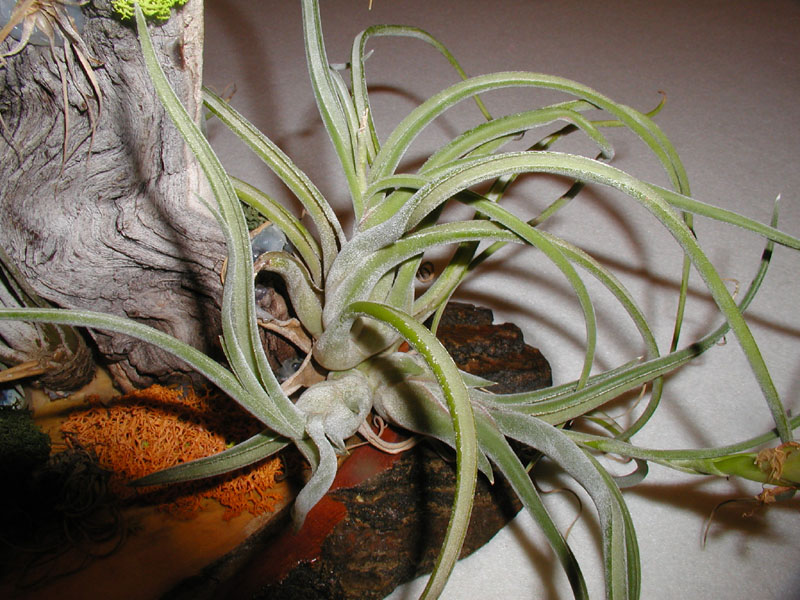Tillandsia paniculata
(Tillandsia paniculata)

Description
Tillandsia paniculata is a grass-growing species first described by Carl von Linné, now known as Carl von Linné . Tillandsia paniculata is included in the genus Tillandsia and the Bromeliaceae family. No subspecies are listed in the Catalog of Life. Tillandsia is a genus of around 650 species of evergreen, perennial flowering plants in the family Bromeliaceae, native to the forests, mountains and deserts of northern Mexico and south-eastern United States, Mesoamerica and the Caribbean to mid Argentina. They have naturally been established in diverse environments such as equatorial tropical rain forests, high elevation Andes mountains, rock dwelling (saxicolous) regions, and Louisiana swamps, such as Spanish Moss (T. usneoides), a species that grows atop tree limbs. Airplant is a common name for plants in this genus. Most Tillandsia species are epiphytes – which translates to 'upon a plant'. Some are aerophytes or air plants, which have a minimal root system and grow on shifting desert soil. Generally, the thinner-leafed varieties grow in rainy areas and the thick-leafed varieties in areas more subject to drought. Most species absorb moisture and nutrients through the leaves from rain, dew, dust, decaying leaves and insect matter, aided by structures called trichomes.
Taxonomic tree:







